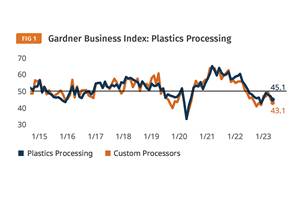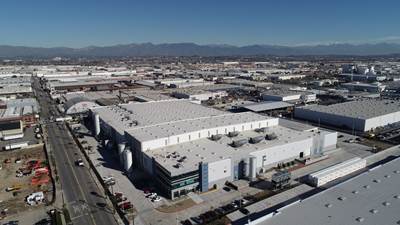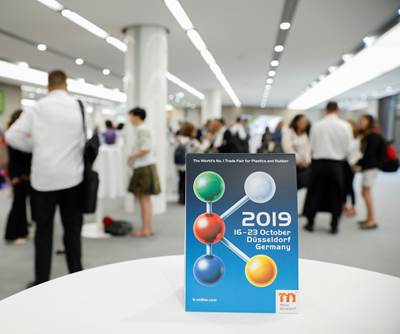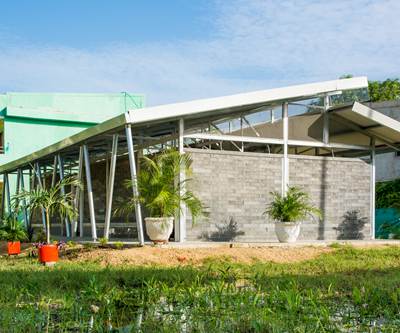How Graham Packaging is Helping to Create a Circular Economy for Plastic Packaging
Graham Packaging’s Tracee Reeves talks with Plastics Technology about ways the company is working to encourage recycling, improve product recyclability and increase offerings with recycled content.
The plastic packaging market is at an interesting crossroads. Some of the aspects that help to grow the industry (light containers and convenience design) are now taking a hit due to the increasing issue of global plastic waste.
But for Graham Packaging, a designer and manufacturer of customized blow-molded plastic containers for a variety of branded markets, this spotlight on plastic packaging provides a chance to bring new innovative and sustainable packaging solutions to the markets.
Earlier this year, Graham Packaging signed the Ellen MacArthur Foundation New Plastics Economy Global Commitment, which states that by 2025, 100% of its plastic packaging can be reused, recycled or composted.
The company also released its 2018 Annual Sustainability Report. Included in the report is a comprehensive overview of the company’s commitment to helping create a circular economy.
I recently spoke with Tracee Reeves, head of sustainability and chief general counsel for Graham Packaging, to talk about the company’s sustainability initiatives. Check out the Q&A below.
Can you expand on why the company recently signed the Ellen MacArthur Foundation New Plastics Economy Global Commitment? What are some of the actions the company will take because of this commitment?
We see this commitment as a way to help our customers achieve their own sustainability goals by 2025 since many of them have signed the pledge as well. Graham Packaging recognizes the important role this commitment plays in the circular economy, which aims to minimize waste by making the most of available resources.
We are dedicated to doing all we can to improve the recyclability of our products. Actions we are taking include:
- Designing for recyclability
- Conducting a comprehensive review of our products to identify areas for improvement and/or redesign
- Seeking out partners in innovation to overcome barriers to recyclability
- Fine-tuning our PET and HDPE products to achieve our 100% reusable, recyclable or compostable goal by 2025
Graham Packaging already uses a significant amount of post-consumer resin (PCR) in our products thanks in part to our recycling center, which obtains close to 50 million pounds of recyclable content from curbside collections annually.
What are some of the ways Graham is working to encourage recycling, improve product recyclability and increase offerings with recycled content?
Graham Packaging is a member and supporter of the Recycling Partnership, a national nonprofit positively transforming recycling efforts across the U.S. Also, within our operations, we have established a waste council and are piloting a zero-waste-to-landfill program at some of our sites. The long-term goal is to roll out a wider program next year and adopt recycling best practices throughout all operations.
Graham Packaging wants to improve product recyclability. We are currently testing a new nylon replacement barrier and new oxygen barrier that should not be detrimental to the recycling stream.
We are also looking to increase the number of products with recycled content. We want to work with our customers to overcome cost and quality concerns by creating innovative packaging that is both affordable and sustainable.
Can you highlight some recent packaging innovations from Graham that have used PCR?
A lot of our packaging contains “oxygen scavengers.” These scavengers absorb oxygen and prevent it from getting into the packaging and spoiling its contents. Many types of oxygen scavengers are sensitive to certain PET chemistries. This means the PET PCR may deactivate the scavengers and let oxygen into the package. Graham is working on a new oxygen scavenger that is more robust and resistant to deactivation.
In addition, many of our household and automotive packages have a very high PCR content. As an organization, we use close to 100 million pounds of recycled material annually.
Beyond PCR, one of the innovations we’re most proud of is a bottle that can be reused up to 25 times. It’s efforts like these that help move us toward a circular economy.
What are some of the challenges when incorporating PCR into packaging?
Our customers are not always able or willing to accept some of the design and cost hurdles that come with a bottle having a high PCR content. Also, since the supply of PCR is limited, due to low recycling rates in the U.S., Graham Packaging has partnered with organizations hoping to move that needle in a positive direction.
To help boost the amount of recycled content we use, Graham incorporates Post-Industrial Recycling (PIR) from selected third parties and from the waste collected during its manufacturing processes. The PIR is reground and put back into the packaging stream, so no plastic is wasted.
How are consumers helping to drive packaging innovation?
We’ve seen a rise in single-serve, on-the-go packaging. While this trend benefits snack categories, it has also created an opportunity for healthier brands. Snack companies led new packaging launches in 2019, driven by consumer demand for fresher, simpler snack options.
Consumers continue to seek out packaging that is “cool” and makes a personal connection with them. Eco-friendly innovations in recyclability and materials are popular, while functional advancements – such as self-chilling containers – have been growing in interest.
Finally, online grocery purchases are becoming increasingly popular, which is driving packaging innovation. Packaging companies like Graham are creating new and inventive ways to reduce product weight to help lower the carbon footprint during transportation.
Related Content
Plastics Processing Contraction Continues
Contraction dominated the GBI index for overall plastics processing activity and almost all components, collectively suggesting a slowdown.
Read MorePlastics Index Shows Supply Chain Improvement Despite Production Slowdown
Future expectations reach 2024 high on the heels of the recent election.
Read MorePlastics Processing Index Remains Virtually Unchanged
Future business indicators rose again this month, but other inputs changed only slightly.
Read MorePlastics Index Shows Fourth Consecutive Monthly Gain
December reading hints at slowing contraction as plastics industry outlook improves
Read MoreRead Next
Under One Roof: Innovative Recycler Closes the Loop
rPlanet Earth looks to disrupt the plastics recycling industry by creating a truly sustainable, closed-loop system for recycling and reuse of post-consumer plastics, with reclaim, sheet extrusion, thermoforming and preform making all in the same plant.
Read MoreReport from the K 2019 Preview: The Future of Plastics is Circular
During the K 2019 Preview in Düsseldorf, Germany, machinery and material suppliers discussed new initiatives and technologies dedicated toward incorporating sustainability into their offerings.
Read MoreDow is Helping to Build Schools Out of Plastic Waste
Dow is working on several initiatives to solve the global plastic waste issue including helping to build schools out of hard-to-recycle plastic waste in Colombia.
Read More


























